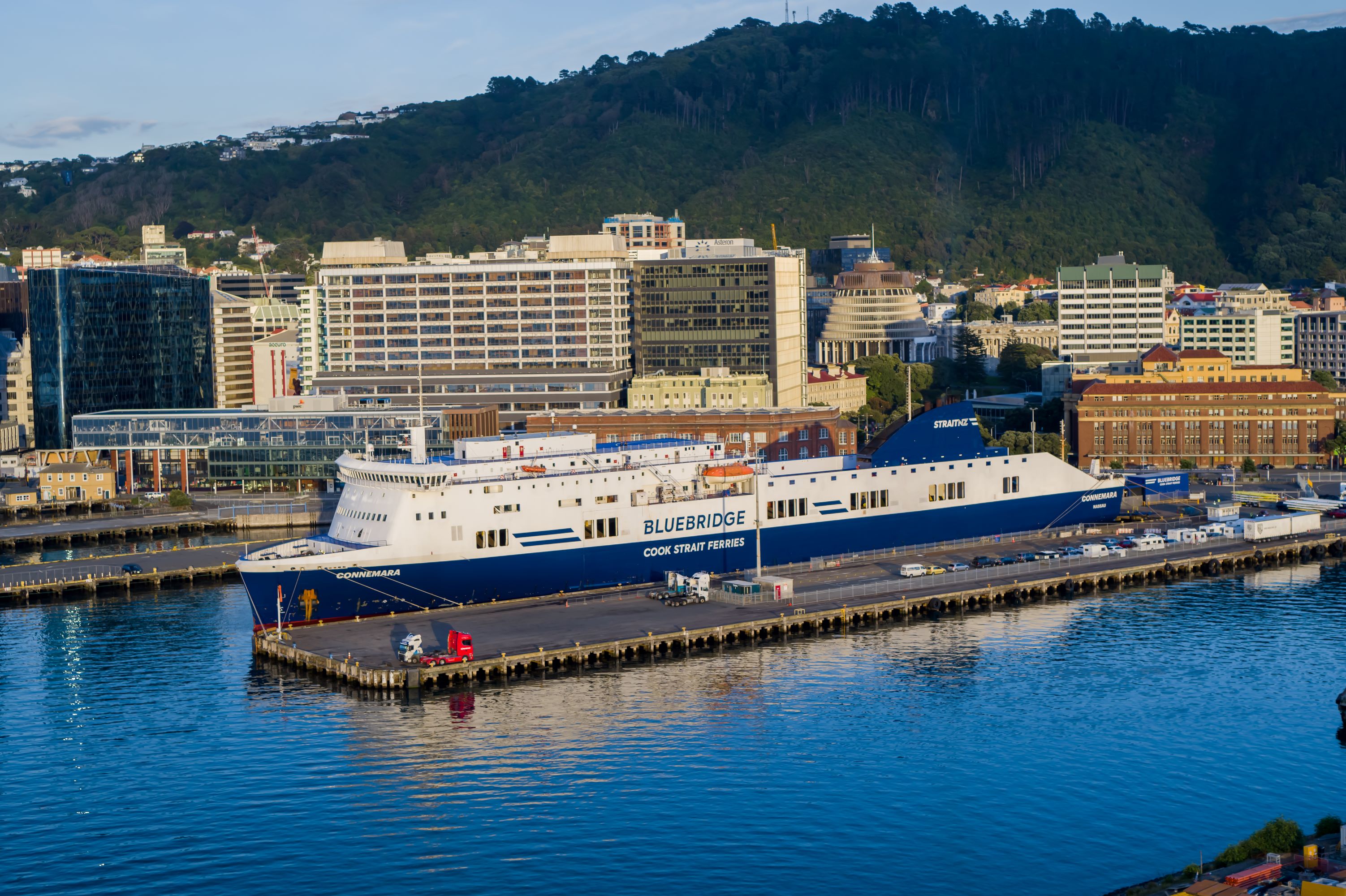News
- Home
- Shore power at King’s Wharf to reduce ferry emissions by 2025
Shore power at King’s Wharf to reduce ferry emissions by 2025
13 July 2023
The Energy Efficiency and Conservation Authority (EECA) has granted CentrePort $500,000 in funding to go towards installing shore power for Cook Strait ferries berthed at King’s Wharf. CentrePort is partnering with StraitNZ Bluebridge on the project.
Shore power means providing electricity to vessels while they are in berth, removing the need for them to run their generator engines, while maintaining power to their onboard systems. By utilising shore power, StraitNZ’s ferries will reduce their overall fuel consumption, improving the quality of air in Wellington’s inner-harbour. Shore power infrastructure at King’s Wharf also has the potential to increase Wellington’s energy resilience in future, as electricity generated by ferries could flow back to shore to support lifeline utilities in emergency situations.
CentrePort Chief Executive Anthony Delaney says CentrePort is targeting net-zero greenhouse gas emissions by 2040.
“We’re really proud to partner with StraitNZ to create shore power at King’s Wharf and to receive this support from the EECA. We’ve made great strides towards net-zero already, with a verified 31% reduction in emissions from our 2019 baseline, in part through a finance arrangement with New Zealand Green Investment Finance (NZGIF).”
”A critical part of making shore power available to customers is for CentrePort to generate and store energy. To enable this, we are building the CentrePort MicroGrid, which will combine embedded generation and storage on port, with capacity from an electrical connection to the Wellington grid. This means our microgrid could increase Wellington’s energy resilience, as power may have the potential to flow in either direction.”
Delaney says shore power will replace conventional hydrocarbon fuels that would normally be consumed by ships while they are in port.
“We are focused on enabling our customers and supply chains to lower their emissions and increase their resilience. Shore power at King’s Wharf is our first step towards providing shore power connections for our other customers.”
Delaney says CentrePort continues to focus on lowering emissions within their existing operations. Investments to date include:
- 100% electric container internal movement vehicles
- LED lighting
- Removing diesel fuelled mobile plant, and,
- a commitment to trial some of New Zealand’s first 100% hydrogen powered trucks on CentrePort’s North Island logistics routes.
Solar panels for the CentrePort MicroGrid will arrive by mid-2024. Shore power will be ready at King’s Wharf by 2025, as the other equipment required will take some time to arrive in New Zealand.
Delaney says that measuring the benefits of this technology is a core way that CentrePort can support its customers.
”We’re committed to providing certified measurement of emissions reduction within the supply chain. Our microgrid will also insulate our customers from energy price disruptions and supply uncertainty, as well as reduce CentrePort’s annual energy bill.”
“The things we are doing to lower emissions complements our ongoing partnership with Zealandia to restore the Kaiwharawhara stream and increase biodiversity in Wellington.”
Visit https://www.centreport.co.nz/environment/ for further information.
For media enquiries please contact Communications@centreport.co.nz or call 029 200 4848
